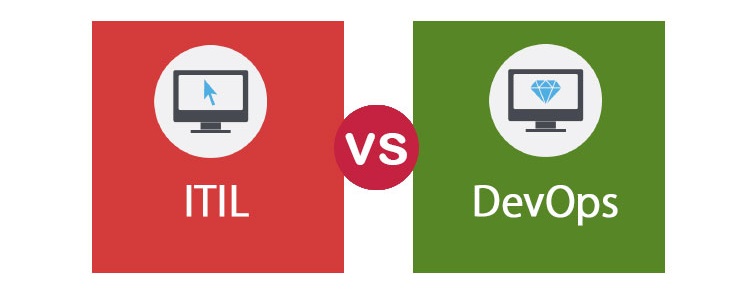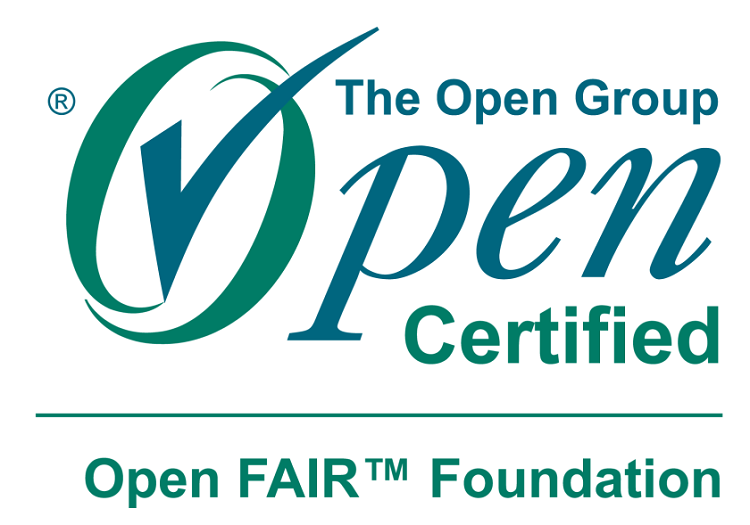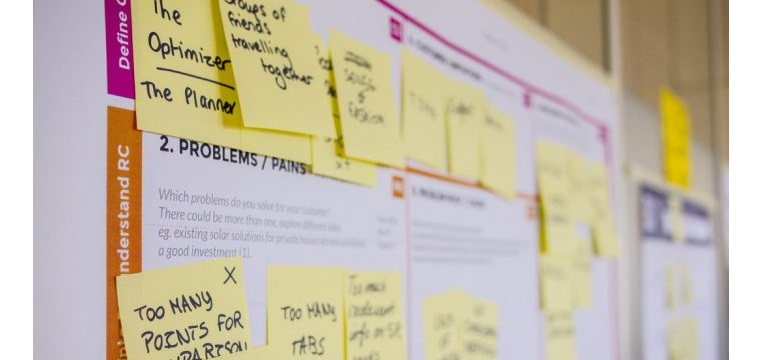Scrum is a well-known and widely used agile software development framework. The Scrum values were introduced to the framework a few years ago and were utilized by each team member to drive their decision-making. These concepts are not widely known or recognized, but they are important to the effective implementation of Scrum. Agile Scrum Master (ASM) certification training course by Process Exam will help you learn to facilitate, coach, and enable cross-functional and self-managed teams as a Scrum Master and apply this knowledge in practice. So in this blog on “Top Scrum Values and How to Use them?”, we will elaborate on scrum values and see how we can use them in our day-to-day life. If this is intriguing, read the blog till the very end. Let us start with a quick understanding of what Scrum is.
What is Scrum?
Scrum is an Agile development framework that uses iterative and progressive methods to build applications or products. It is an evolution of Agile management.
Now, to give a brief introduction to Agile Methodology. Agile methodology is a development and testing strategy that encourages continuous iteration throughout the project’s development life cycle. It is dividing the entire project into smaller, more manageable parts to build and deliver software or applications faster.
Scrum is a part of Agile Methodology. Its technique is based on a set of well-defined tasks and activities that have to be implemented to develop the products. Scrum helps teams adapt to the user’s changing requirements by reprioritizing the important tasks and releasing the software in shorter and faster cycles while allowing the team to learn and improve.
Scrum is now typically handled in Sprints, short and transitory chunks. A sprint is a period (typically between two and four weeks) during which the scrum team expects to finish a set of tasks. Each iteration of the final product is built in a single Sprint and released as a single iteration. Each Sprint is its entity, delivering a complete result. When the client requests it, an iteration or variant of the final product will be supplied with a specific amount of work done.
So, I guess you have some idea about Sprint and Scrum. Let us understand what Scrum artifacts are and why it is important.
What are Scrum Values?
Scrum values are the principles that Scrum team members adhere to. These ideals serve as the foundation for the Scrum framework. The Scrum Values suggest various sorts of behavior and help better understand and implement Scrum principles and gain greater value from them when performing the tasks in difficult environments.
The scrum handbook says that “Successful usage of Scrum depends on individuals becoming more skilled in embodying these five values.” So, to ensure that projects attain their maximum potential, each team member must commit to maintaining the ideals outlined in the Scrum team charter. The scrum values are the principles that the entire team should uphold while working in the organization.
The Scrum team takes its own decisions and establishes its own goals. So for the entire team to make decisions and come to a final conclusion, scrum values are very important. It is the fundamental values that individuals must share in order to interact effectively. A shared belief system helps any team collaborate effectively, which is basically the whole ideology of Scrum.
Scrum was created primarily for managing complicated projects that must adapt swiftly to changes in scope or requirements. That is why each of the five Scrum values is so important to the success of a Scrum project. So, these values are not something theoretical. It is about certain qualities that individuals should have while working in a team for an organization.
The five scrum values are commitment, focus, openness, respect, and courage.
Let us talk about each one of them in detail.
Commitment
Scrum relies on each team member’s personal commitment to see the project through to completion. This includes each member of the Scrum team making a personal commitment to attaining the team’s objectives. So, it is more than simply deciding to meet deadlines and other milestones. Although completing deadlines is part of the commitment, the scope extends well beyond milestones to reaching the organization’s ultimate mission and goal. It’s a dedication to learning, excellence, giving their all, the team, and its collaboration. Scrum leads to success by virtue of each individual’s commitment to the success of the project.
To reach a scrum goal, Scrum teams must be able to collaborate effectively and function as a unit. This includes trusting one another to do their responsibilities and deliver to the best of their ability. This will only happen if every member of the team is fully supportive to the team and the project. Scrum masters and team leaders should also assist in building commitment by supporting good sprint preparation and shielding the teams from mid-sprint scope changes and extra pressure.
Some of the Primary Ways Commitment Can Be Expressed Are:
◉ Sprint commitment - A sprint commitment represents reasonable goals and a limited timeline to accomplish these goals. As a result, the team must commit to working their part to meet the Sprint goals.
◉ Team commitment - As a team, you must accept changes and demonstrate adaptability. You may accomplish the project goals in smaller parts as a team. If some problem occurs, the team can unite and discuss the problem with one another in order to come up with a specific solution to the problem.
◉ Individual commitment - As an individual in a team, you should contribute as much as you can to the Sprint objective. This symbolizes your own commitment.
Commitment also includes the team member’s passion for the team and teamwork. They make a commitment to quality. Make a commitment to learning. Commit to doing their best every day. Make a commitment to self-organize and make a commitment to excellence. This was about Commitment. Now, let us move on to the next scrum value – Focus.
Focus
Scrum projects usually divide sprints. As a result, Scrum teams have one to four weeks to generate the required product increment. Generating the desired outcome requires complete focus from team members in order to fulfill their objectives. Scrum’s short timeline enables teams to focus on what’s most important right now without getting distraught by thoughts of what could become important in the future. Unfortunately, there might be some problems or distractions that abound, and some of them can be urgent enough to require immediate attention. Scrum team members must stay focused on the work they have to complete and power throughout the project.
When the prerequisites are definite, and the objective is chosen, the most effective strategy to achieve the goal. This encourages you to deliver quicker, better, and generate more results. You may reduce wastage of resources and deliver on time by focusing more on a goal. This Scrum value utilizes a reduced risk rate and offers adequate time to improve and provide the required results. In Scrum, an iterative-incremental methodology and timely delivery help us stay focused on the project goal. Each team member should remain focused on the work at hand as well as see how it affects the sprint goal so that they get the most out of each Sprint.
For Example:
Scrum masters might restrict the number of tasks or priorities assigned to each team member throughout sprints to help them stay focused. Furthermore, promoting a complete team involved in the daily Scrum meeting can help employees in staying focused on their assigned responsibilities. The Daily Scrum enables individuals to focus cooperatively on the immediate daily tasks required to make the most progress toward the Sprint Goal. Product goals provide focus throughout Sprints and helps in determining and maintaining the direction the team should be working. This was about Focus. Now, let us move on to our net scrum value – Openness.
Openness
To accomplish the most progress in the shortest amount of time, each Scrum team member must be completely honest and open about their own performance. The daily Scrum meeting’s purpose is to identify and solve problems. That can’t happen if team members aren’t open about any problems or obstacles they’re facing. Furthermore, team members must be willing to collaborate with their colleagues and see them as important contributors to the project’s success.
Being open with their teams is one of the best strategies for Scrum masters to promote openness. Giving honest feedback at the daily Scrum meetings is not only important for making required adjustments, but it will also inspire honesty and openness from team members. Scrum team members and project stakeholders must maintain open and honest communication. When discussing the expected workload and the issues associated with it, both parties must be completely honest. This transparency promotes confidence among all parties. This value also implies being flexible and open to changes.
Now, almost every project has some risks and challenges. Scrum values openness and honest communication with all stakeholders, team members, and the higher authorities. This includes informing team members honestly if anything has to be redone and politely receiving such feedback, believing that everyone is working toward the same goals. This openness principle also implies that project stakeholders must communicate immediately and honestly if, for example, changes in schedule, resources, or product requirements. The changes should mention without any pressure.
Some of The Benefits of Openness Are:
◉ Being open and honest about one’s work adds to team transparency
◉ Openness allows team members to ask for help
◉ Openness allows team members to assist one another
◉ Team members that are open may offer their ideas, feel heard by their colleagues, and support team choices
◉ When assumptions are proven to be incorrect, openness allows them to confess the wrong decision. This also applies to a feature that was evident to be valuable
These were some of the benefits of openness value. Now, let us move on to our next scrum value, which is respect.
Respect
Respect is important in addressing and solving complicated challenges and building high-performing teams. Scrum team members should respect one another, including their values, perspectives, experiences, and cultures. Mutual respect improves Scrum team members’ connections and increases the team’s effectiveness. Members must also extend that respect to the users, listening to their concerns and complaints and ensuring that the completed product fits their needs. Scrum team members must accept that clients may change their minds or adapt their demands due to various reasons.
Scrum teams are often collaborative and self-organizing, but each member is independent in the sense that no one is continuously reviewing their work. It is considered that each employee is capable of doing their duties without continual supervision or checking in from a manager or coworker. Respect involves putting your faith in your teammates to do their jobs, listening to and considering their suggestions, and appreciating their achievements.
Respect in a Scrum team means acknowledging that no single individual or their contribution is more valuable than another, just as it does in any other team activity. You have to respect personal space and entrust them with completing the tasks by the given deadline. Scrum masters may assist in creating respect among their teams by showing respect to the product owner, stakeholders, and team members.
Some of the Benefits of Respect in Scrum Are:
◉ We empower and enable self-managing teams when we respect and recognize that individuals are essentially resourceful, creative, and capable of collaborating to solve complicated challenges
◉ Teams may efficiently resolve complex problems in new creative ways by respecting people’s various backgrounds, experiences, and each individual unique abilities to solve problems
◉ When we respect that people are driven by purpose, mastery, and autonomy, we build an atmosphere that engages individuals in the team and allows teams to become more efficient
◉ There is transparency when we respect that individuals are doing their best work within the given timeline and their present resources
◉ When we respect others and believe they have good intentions, we can have difficult conversations that help us find out how to settle conflicts and progress as a team
◉ We can ensure that everyone has the opportunity to be heard when there is respect for all thoughts and viewpoints. When we believe we have been heard, we can completely support team decisions, even if they are not our ideal choice
This was about Respect Value. Now, let us move on to our last value, which is courage.
Courage
Scrum teams should have the courage to be honest, open, and upfront about the project’s progress and any bottlenecks they encounter, both internally and with stakeholders. Team members must also have the confidence to seek assistance when necessary, attempt new techniques or processes that they are unfamiliar with, and disagree and engage in open debate politely.
Like respect, scrum masters can first and foremost promote courage by displaying it. For example, to avoid mid-sprint adjustments or scope creep, the Scrum master must be courageous enough to stand up to the stakeholders and product owners.
Next, Team members must have the courage to confront difficult challenges and do the correct thing. It’s simple to stay on the safe side and avoid risks. Unfortunately, a team lacking in courage will not be imaginative, creative, or productive. Scrum team members must have a strong backbone and not back down in the face of challenging circumstances. This courage extends to supporting Scrum methodology and putting its values into action, especially when confronted with critics or doubters.
Some of the Ways Courage Can Be Shown Are:
◉ It requires courage to be open about work progress while being under pressure to deliver work quicker
◉ Asking for help or admitting we don’t know how to accomplish anything takes courage
◉ It requires courage to hold people accountable when they fail to meet team expectations
◉ It requires courage to try to create something never built before, without knowing whether or not it will succeed
◉ We could learn that we produced something that our clients do not want. It requires courage to recognize that the assumptions were incorrect
◉ Requires courage to disagree with a team member and participate in healthy disagreement
◉ It requires courage to accept mistakes made. This might apply to technical work, decisions, or the entire attitude of the individuals
So this was about the value – Courage. Now, I guess you have some idea about the five scrum values. So, let us now move on to our next topic and see how important are scrum values.
How are Scrum Values Important?
Scrum values assist each team member in determining how to make their contribution while keeping the team’s long-term health in mind. Scrum teams typically have four to ten members and must complete a large amount of work quickly. So, each individual must be confident in performing to the best of their abilities. Here are some of the reasons why each scrum value is important?
1. Commitment
Commitment is especially important while doing technical and creative tasks. Team members should commit to their job, to the team, to quality, to Sprint and Product Goals, to presenting as professionals, and so on before they can deliver great achievements. Commitment is essential during the Sprint, but it also assists the team in developing a realistic and achievable Sprint Backlog during Sprint Planning meetings.
2. Focus
Nowadays, one of the most desirable and difficult-to-achieve mindsets in our dynamic and ever-changing society is the focus. Messages, emails, phone notifications, social media, etc. All have a significant influence on our work and concentration. Focus is necessary if we are to do high-quality mental work. Without adequate focus, we may lose interest or get delirious during working hours without generating useful, measurable results.
3. Openness
Openness is necessary for excellent teamwork, which is important while creating and delivering high-quality products utilizing the Scrum framework. All team members and stakeholders should be open about their work and progress, as well as any difficulties. Furthermore, transparency is essential while providing feedback and learning from others.
4. Respect
Respect is very important because each member who is a part of the scrum framework needs to feel valued. Every team or community must respect different opinions and different points of view, and also the various personalities, cultural backgrounds, and so on. We must also respect any modifications made by the customer, as well as their decisions on how to design and develop the product.
5. Courage
This value is very important as it takes courage to debate others’ opinions, but it is equally critical to express our own opinions or concerns when we have them. Admitting a mistake takes guts, and courage is necessary to protect one’s values and principles. So, these were some of the ways scrum values are useful. Now, let us move on to our next topic and talk about the difference between scrum values and scrum principles.
Difference Between Scrum Values and Scrum Principles
Mostly, people confuse the term scrum values and scrum principles because their meanings are similar. But in Scrum, Scrum values provide teams with the rules of conduct that they must adopt and live by when adopting Scrum. Scrum principles, on the other hand, are the essential guidelines for applying the Scrum methodology to your organization. As we have already learned about scrum values in this article, now let us learn the different scrum principles. So, there are six scrum principles:
1. Empirical Process Control
This concept emphasizes Scrum’s basic philosophy, which is founded on three major ideas: transparency, inspection, and adaptability.
2. Self-Organization
This principle focuses on today’s workforce, which offers much more value when they are self-organized, resulting in an improved team and shared ownership. It also creates an innovative and creative atmosphere, which is very important for the growth of the organization.
3. Collaboration
This principle mainly focuses on the three essential characteristics of collaborative work: awareness, articulation, and appropriation. It also promotes project management as a shared value-creation process in which teams collaborate and interact to achieve the most value.
4. Value-Based Prioritization
This principle emphasizes Scrum’s focus on delivering maximum business value from the start of the project and throughout the project.
5. Time-boxing
This principle highlights how time is regarded as a limiting constraint in Scrum and is utilized to help manage project planning and execution more efficiently. Sprints, Daily Standup Meetings, Sprint Planning Meetings, and Sprint Review Meetings are all time-boxed aspects of Scrum.
6. Iterative Development
This principle describes iterative development and focuses on how to effectively manage changes and create products that meet the demands of customers. It also defines the Product Owner’s and the organization’s roles in iterative development.
So, I guess you have some idea about scrum values and scrum principles. Let us now move on to our next topic and talk about how to apply scrum values in day-to-day life?
How to Apply Scrum Values in Day-to-Day Life?
Commitment, Focus, Openness, Respect, and Courage are excellent characteristics of any workplace, especially if you are working in a Scrum environment. So, how do you enforce Scrum values in the workplace?
Firstly, explain the values. Discuss with your colleagues what you’ve learned about Scrum values. Talk to your colleagues to gain their buy-in on implementing these five guidelines. Some of the ways you can apply scrum values in day to day life are:
◉ Take on challenging jobs to show your courage
◉ Maintain your focus by sticking to your routine
◉ Demonstrate your commitment by performing your task properly and assuming that your team is doing the same
◉ Respect your team members by allowing them to do their tasks on their own
◉ Demonstrate openness by acknowledging mistakes and talking honestly and politely about areas for development on the team
◉ Look for a platform that fosters communication rather than the ones that complicate openness and which allows team members to work freely with respect
These are some of the steps you can follow to apply scrum values in day-to-day life.
Source: invensislearning.com



















